Higher classification Sweet and chili peppers | Rank Cultivar | |
Similar Dundicut, Sweet and chili peppers, Guntur chilli, Hainan yellow lantern chili, Kambuzi | ||
Guntur Sannam or Capsicum annuum var. Longhum, is a type of chilli variety which widely grows in Guntur district of Andhra Pradesh and Warangal, Khammam districts of Telangana in India. It was registered as one of the geographical indication from Andhra Pradesh under the Geographical Indications of Goods (Registration and Protection) Act, 1999.
Contents
- Origin
- Etymology
- Characteristics
- Cultivation
- Geographical area of production
- Grades and comparison
- References
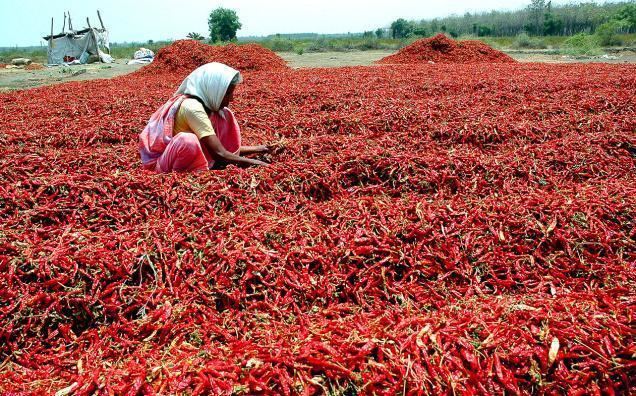
Origin
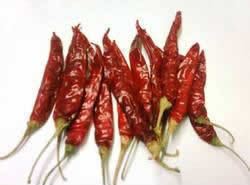
Guntur Sannam chilli belong to the species Capsicum annuum. It is well known as a commercial crop used as a condiment, culinary supplement or as a vegetable. Among the spices consumed per head in India, dried chillies contribute a major share.
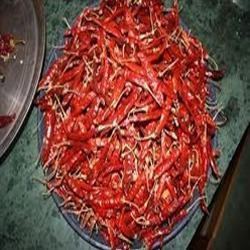
Chilli was known to Indians about 400 years ago. Globally, India stands first in the production of chilli. The province of Andhra Pradesh leads in its production, providing 46% of all chilli produced in India. The very fact that etymologically, the word Guntur Sannam chilli has its origin in Telugu confirms its Andhra Pradesh origin. The word Sannam stands for thin in Telugu.
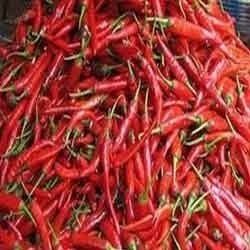
Foreseeing the potential for chilli production in this region, the government of Andhra Pradesh started a regional research station at LAM near Guntur, India, three decades ago, which works on research aspects of chilli as well. Guntur has been associated with chillies for decades, and hence the prefix Guntur for the name of this chilli.
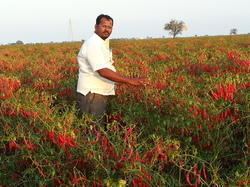
At present, chilli has become one of the most important cash crops and thousands of people directly depend on the cultivation of this spice for their livelihood.
Etymology
The word Sannam in Telugu means 'thin'. The very name of the Guntur Sannam Chilli indicates two facts: the description of the fruit, and more importantly, the strong antecedents arising from Andhra Pradesh.
Characteristics
Guntur Sannam chilli has specific characteristics that have enabled it to earn international and national acclaim. Sannam chilli is generally known to trade as a S4 type chilli and is mainly used for its pungency and for the extraction and derivation of capsaicin. The following are the chief attributes/characteristics of Guntur Sannam chilli:
Cultivation
Guntur Sannam has its peak harvesting season from December to May. The annual production of this type is approximately 280,000 tonnes. Guntur Sannam chilli has specific requirements in its means of production for attaining an ideal/optimum level of production. The crops are highly disease prone and need special care and attention to ensure a healthy pest free yield.
Geographical area of production
In the geographical area of Guntur Sannam, chilli is cultivated, processed and made available mainly from Guntur district of Andhra Pradesh. It is also grown in neighbouring regions, namely in the districts of Prakasam, Warangal and Khammam.
Guntur Sannam chilli requires a warm and humid climate for its growth and dry weather during its period of maturation. The crop can be grown at altitudes up to 2,100 metres. Black soils with pH 6 to 7 and retain moisture for longer periods are suitable for a rainfed crop, whereas well-drained chalky, deltaic, and sandy loamy soils are good under irrigated conditions.
Grades and comparison
At least 4 grades of Guntur Sannam chillies are known to exist. They are:
Capsaicin values of some of the well-known and accepted varieties of Indian chillis are:
